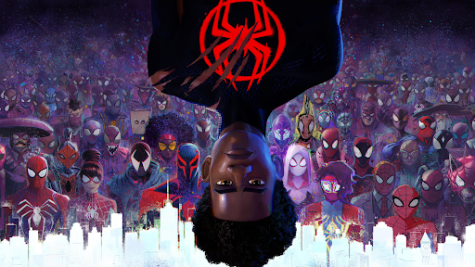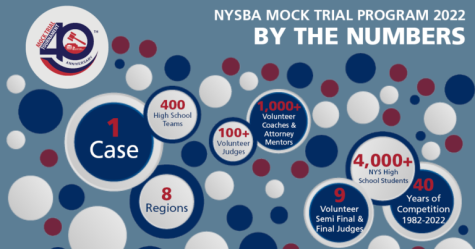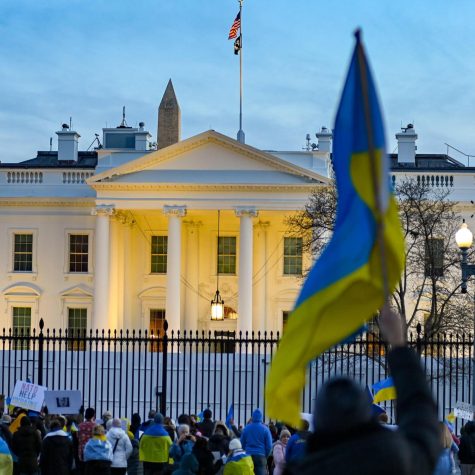Why You Need to Watch: Star Wars: The Clone Wars

February 1, 2017
Many of you may be surprised, but under the campy and childish exterior of Star Wars: The Clone Wars is a show that anybody who has even a slight interest in Star Wars should watch. Let me be clear; I am talking about the 2008 show, not the 2004 one (Although that is also very good and you should watch that too).
For those who don’t know, Star Wars:The Clone Wars is a Cartoon Network show that premiered in 2008 and ran for 5 seasons until it was cancelled by Disney in 2014, although it did get a short 6th season on Netflix. It usually follows the adventures of Obi-Wan, Anakin, and Ashoka (Anakin’s Padawan) during the Clone Wars between episodes 2 and 3.
Clone Wars is great, but just like the regular Star Wars movies, there are parts you should avoid. Most, if not all of Season 1 is pretty bad. It’s aimed towards a younger audience and the story lines and characters are much less interesting during this time. The only episode I would recommend watching is Rookies (S1, Ep 4), as it introduces characters that are important later and has an okay plot line, and maybe the first episode of the Malevolence arc (S1, Ep 2).
The story really begins to pick up with Season 2 and gets a bit darker. I remember the Geonosis arc (S2 Eps 5-9) and the Zilo Beast arc (S2 Eps 18-19) being really good, although I haven’t seen them in a few years so that could be just younger me talking. But the Mandalore and Boba Fett arcs (S2 Eps 12-14 and 20-22 respectively) are must watches as the former introduces Dutchess Satine, the leader of Mandalore (yes, that Mandalore) and Obi-wan’s former love interest, and the latter features Boba Fett attempting to get revenge on Mace Windu for killing his father. While these episodes are good, Season 3 and onward are really where this show shines.
Notable episodes include the Savage Opress arc (S3 Eps 12-14) which features one of the greatest characters you’ve never heard of, and the Mortis arc (S3 Eps 15-17) which explores the nature of the force and elaborates on Anakin’s “chosen one” status, as well as introducing a bit of foreshadowing to the original trilogy. Other episodes in this season expand on the Mandalore story (which is arguably the best part of this show in my opinion) and flesh out the Separatists a bit more.
Season 4 explores Anakin’s fall to the dark side, something which was poorly handled in the movies, in a way that makes the character seem realistic and relatable not like an angsty teenager. The Kadavo arc (S4 Eps 11-14) brings back Anakin’s memories of enslavement and how he deals with this really shows some insight into his character. The Bounty Hunter arc (S4 Eps 15-19) has Obi-wan fake his death and go undercover as a bounty hunter to stop an assassination attempt on Senator Palpatine. This is something that shows the impact the loss of his master has on Anakin and shows his growing distrust of the council, once he learns Obi-Wan is actually alive. The Krell arc (S4 Eps 7-10) expands on the clone troopers, to show that they’re not just mindless drones that follow orders but thinking people, and has a great villain in Pong Krell, a Jedi who treats the clones as no more than pawns. The end of the season features the return of Darth Maul, a character who got little development in The Phantom Menace but who has an amazing story in this show that makes him one of my favorite Star Wars characters ever.
In Season 5 Saw Guerera, a character from Rogue One, is introduced for the first time (sadly in a mediocre arc) but his story makes his character in Rogue One much more fleshed out and understandable. He’s someone who can’t let go of the past, and his refusal to let go consumes him. Darth Maul, Savage Opress, and Mandalore team up in the BEST arc of this show, the Darth Maul arc (S5 Eps 14-16). In this, Darth Maul teams up with a group of Mandalorians to take over the planet, not through military force, but by winning the support of the people, something that isn’t often shown in villains. It also features the greatest lightsaber duel in all of Star Wars, which I cannot discuss without spoilers.
This arc humanizes Maul’s character and actually makes you sympathize with him, something we also rarely see in Star Wars. Finally, there is the season finale Ashoka arc (S5 Eps 17-20) which plays out more like a crime drama or noir mystery than a Star Wars episode. The Jedi temple is bombed and Ashoka and Anakin are tasked to track down the bomber. The plot goes through many twists and turns (which I also cannot spoil) and eventually explains why Ashoka isn’t in Episode 3, and includes by far the most emotional moment in this entire show.
The entirety of Season 6 is good, just watch all of it. The first arc features a fan-favorite character investigating a clone who killed a Jedi who eventually ends up being caught in a massive conspiracy about Order 66, and explains how clones can go from the Jedi’s good friends to their killers. Another arc features Anakin dealing with relationship issues with his wife Padme and another senator, Rush Clovis. This again shows Anakin beginning to fall to the dark side as jealousy and doubt consume him. Finally, the last arc features Yoda trying to discover the nature of the force and explains how to become a force ghost, something that is much more interesting than it sounds.
Overall, Star Wars: The Clone Wars was a great show that was cut off in its prime. It told interesting stories, fleshed out previously unlikable characters, and explored Anakin’s fall in a way the movies could never do. They even make Jar Jar Binks look good occasionally! While there are bad episodes and arcs, it is easy to avoid them if you look on the internet or just watch the first 5 minutes. Most arcs and episodes, however, are quality stories with well developed characters and themes of war, democracy, friendship, letting go, family, and death that are thoroughly explored in a thoughtful way.
But seriously, just watch all the Mandalore episodes, they’re well worth it.










